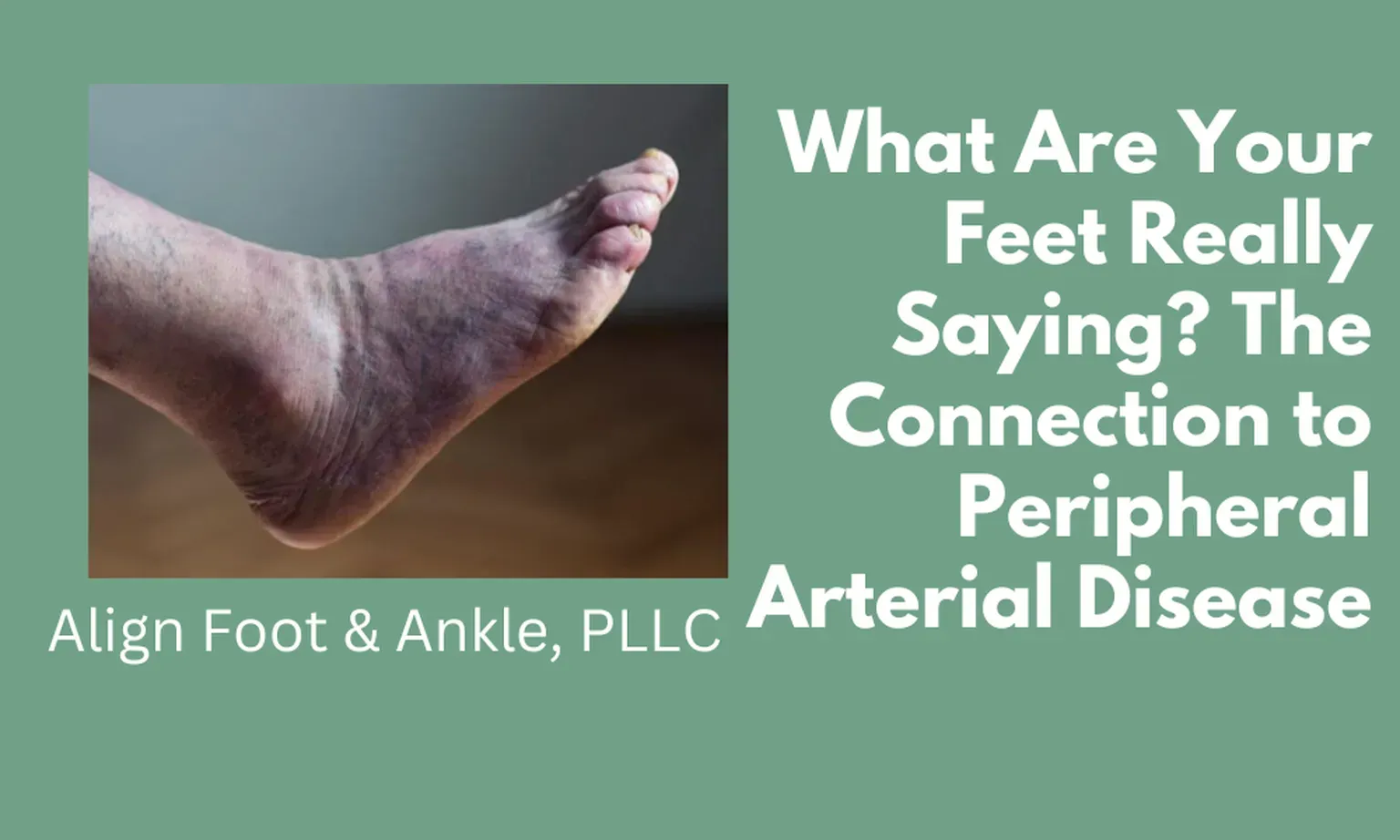WHAT ARE YOUR FEET REALLY SAYING? THE CONNECTION TO PERIPHERAL ARTERIAL DISEASE
IN THIS BLOG POST, WE WILL EXPLORE COMMON SIGNS AND RISK FACTORS OF PAD IN THE FOOT AND ANKLE AND EXPLAIN HOW ALIGN FOOT & ANKLE CAN ASSIST IN DIAGNOSING THIS CONDITIONI
What is PAD?
Peripheral Arterial Disease (PAD) is a condition that affects the arteries outside of the heart and brain, particularly those in the legs. PAD is caused by a buildup of plaque in the arterial walls, which restricts blood flow to the affected area. This can lead to a range of symptoms, including leg pain, numbness, and cramping.
While PAD can affect any part of the legs, it is particularly common in the feet and ankles. In fact, foot and ankle symptoms are often one of the first signs that someone has PAD. Despite this, many people are unaware of this connection between their feet and overall health. Identifying the symptoms of PAD in the foot and ankle is crucial for early diagnosis and effective management. In this blog post, we will explore common signs and risk factors of PAD in the foot and ankle and explain how Align Foot & Ankle can assist in diagnosing this condition.
Here are some risk factors for PAD:
- Smoking
- High cholesterol
- High blood pressure
- Physical inactivity
- Obesity
- Diabetes
Symptoms of PAD on your feet and ankle:
- Leg Pain: One of the primary symptoms of PAD is intermittent claudication, which manifests as pain or cramping in the calf, thigh, or buttocks during physical activity. The pain usually subsides with rest but returns upon resuming activity.
- Numbness or Tingling: People with PAD may experience numbness or tingling sensations in the foot and ankle. This occurs due to the reduced blood flow and decreased oxygen supply to the nerves in the affected area.
- Weak or Absent Pulses: A weak or absent pulse in the foot or ankle is an alarming sign of restricted blood flow caused by PAD. This can be detected through a physical examination conducted by a healthcare professional.
- Non-Healing Wounds: PAD can impair the body’s ability to heal wounds. Sores or ulcers that do not heal or take a prolonged time to heal, particularly on the foot or ankle, may be indicative of PAD.
- Changes in Skin Color and Texture: The skin of the foot and ankle may appear pale or bluish in color due to inadequate blood supply. Additionally, the skin may become dry, shiny, or develop a thin, brittle appearance.
- Hair Loss: Reduced blood flow can result in hair loss or slow hair growth on the foot and ankle.
At Align Foot & Ankle, Dr. Ho-Ellsworth’s expertise and diagnostic techniques can help identify and confirm the presence of PAD. Here’s how Align Foot & Ankle can assist:
- Comprehensive Examination: Align Foot & Ankle professionals conduct a thorough examination of the foot and ankle, looking for visible signs such as skin color changes, ulcers, or wounds that are slow to heal.
- Pulse Assessment: They assess the pulses in the foot and ankle, checking for weak or absent pulses, which may indicate reduced blood flow associated with PAD.
- Ankle-Brachial Index (ABI) and Toe-Brachial Index (TBI) Test: This non-invasive test measures blood pressure in the arms and ankles to calculate the ABI ratio. A lower ABI value suggests PAD and the severity of arterial blockage.
- Collaboration with Vascular Specialists: If necessary, Align Foot & Ankle may collaborate with vascular specialists to further evaluate and diagnose PAD. This ensures comprehensive care and accurate diagnosis.
If you are worried about your circulation, schedule an appointment for an appointment with Dr. Thuy Ho-Ellsworth. Call us at (512) 882-4911 or schedule an appointment on our website.



